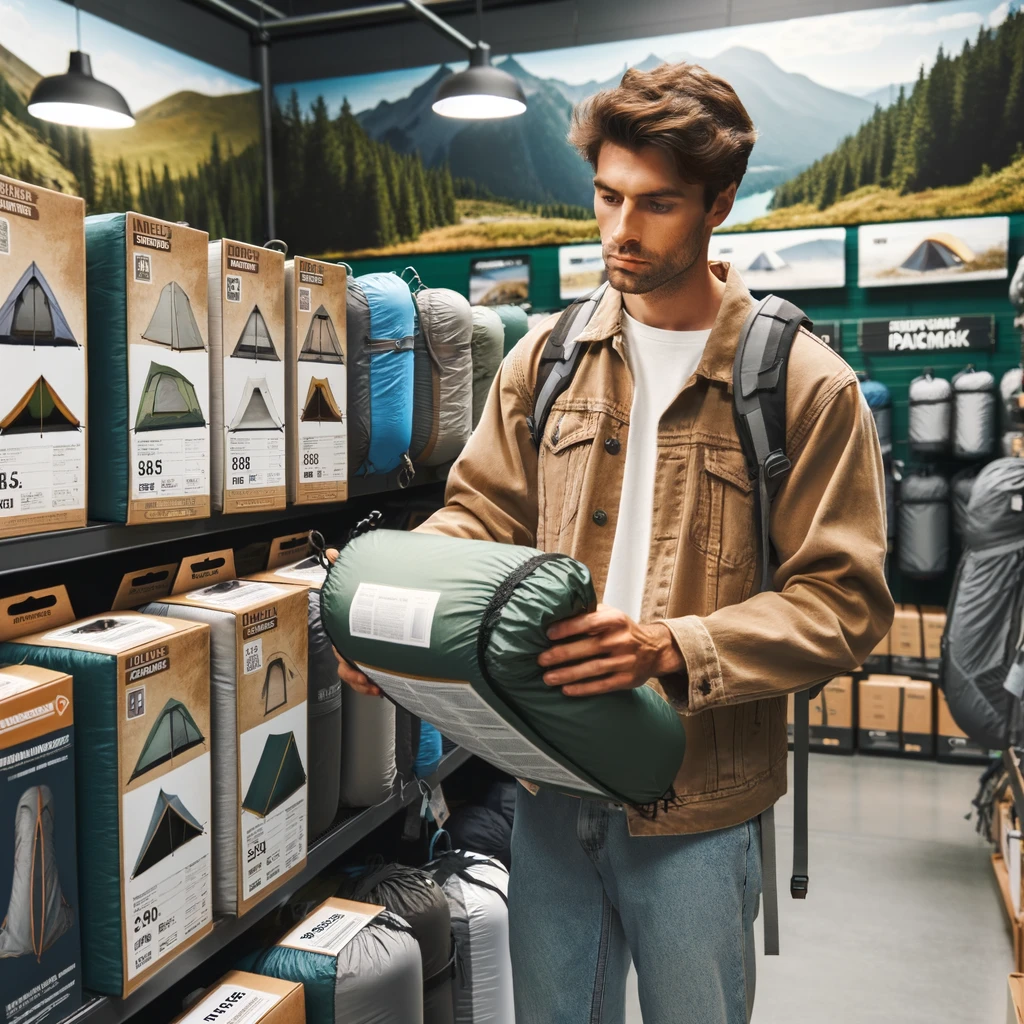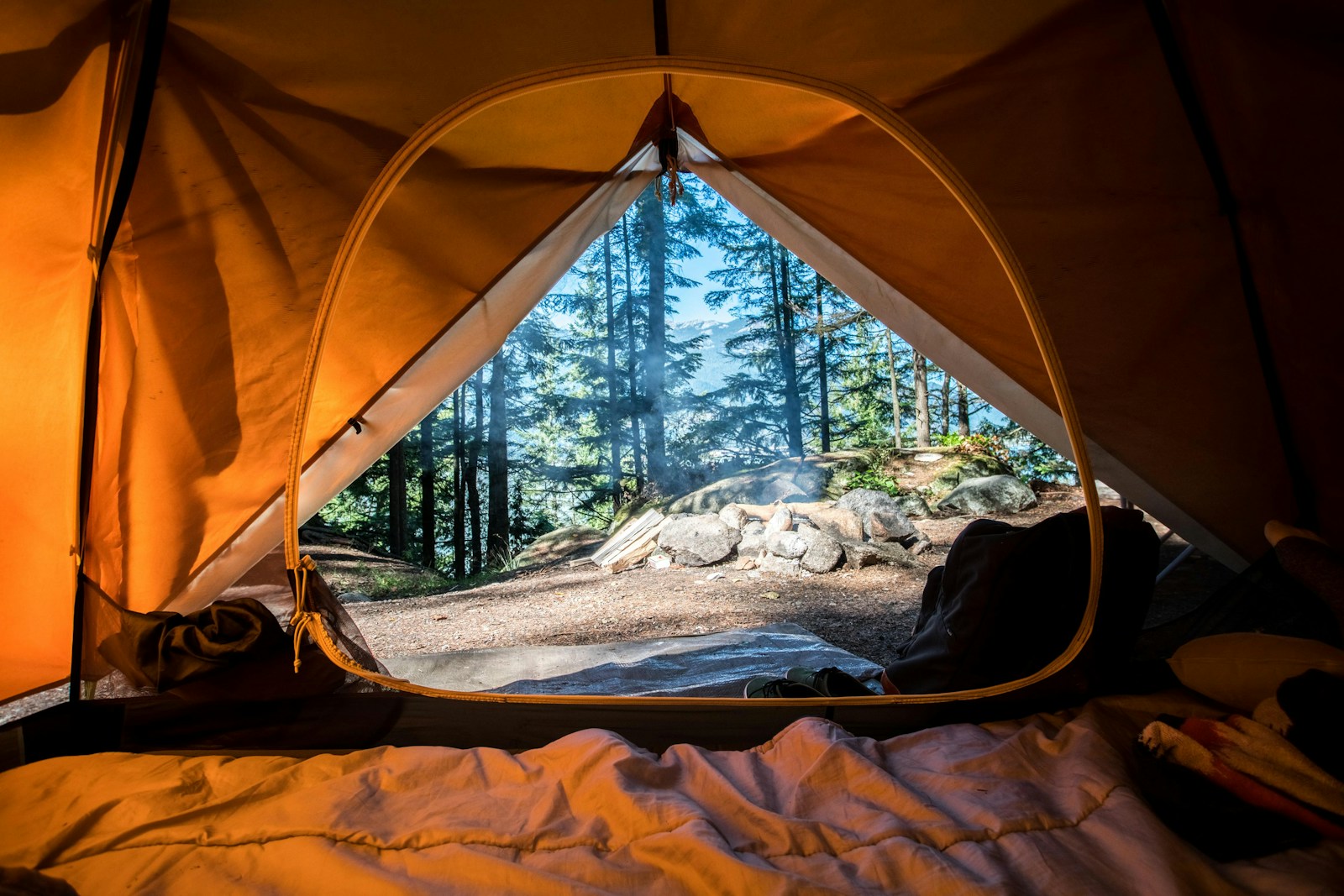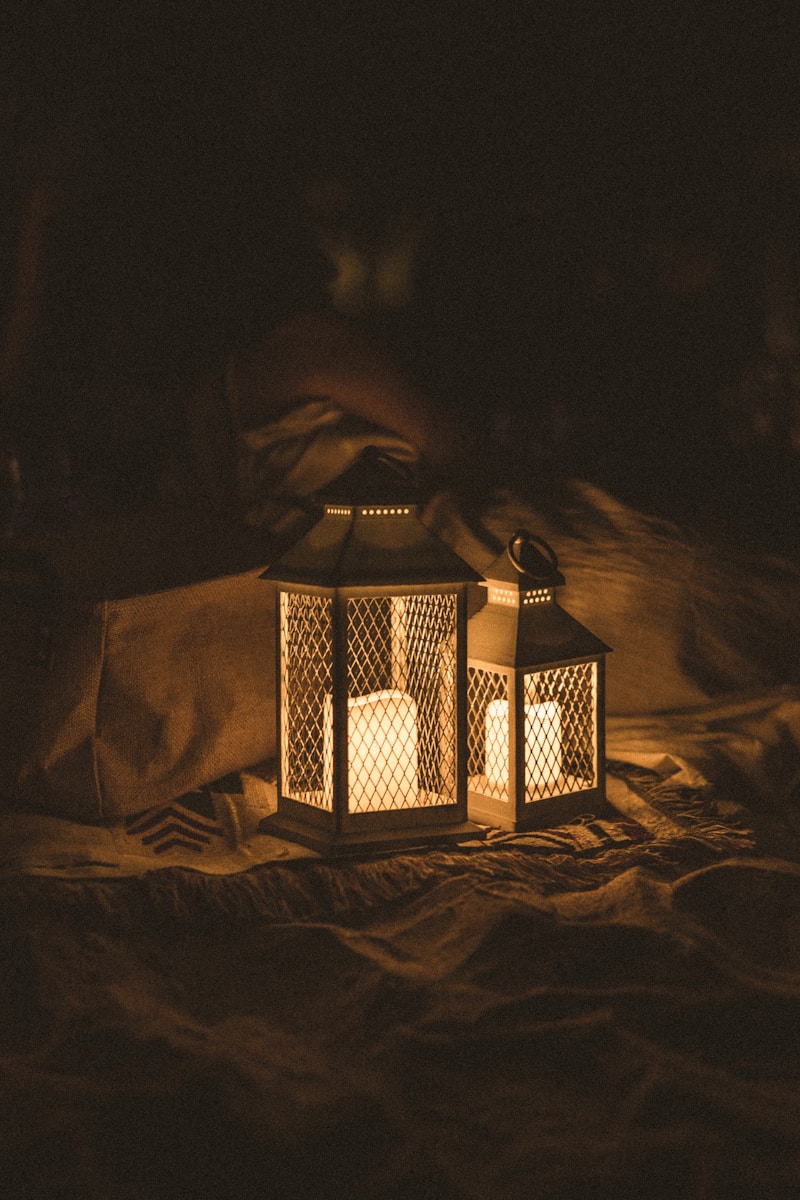If you’re an avid backpacker, choosing the right backpacking tent is essential for a comfortable and enjoyable trip. But with the multitude of options available, it can be overwhelming to know where to start. From size and weight to weather resistance and ease of setup, there are several factors to consider when selecting a tent for backpacking. By understanding your specific needs and considering these important aspects, you can make an informed decision that will enhance your outdoor adventures.

Size and Weight For A Backpacking Tent
When choosing a tent for backpacking, one of the most important factors to consider is the size and weight of the tent. As you’ll be carrying the tent with you on your backpacking adventures, you want to ensure that it is lightweight and compact enough to fit comfortably into your backpack.
Capacity
Firstly, you’ll need to think about the capacity of the tent. How many people will be using it? Do you prefer more space or are you looking for a snug fit? Tents typically come in various sizes, ranging from one-person tents to larger ones that can accommodate multiple people. Consider the number of people you’ll be camping with and choose a tent that provides adequate space for everyone.
Packability
Packability is another crucial aspect to consider when it comes to tent size. You want a backpacking tent that is easy to pack and doesn’t take up too much space in your backpack. Look for tents that come with a compact storage bag and can easily be packed down to reduce bulkiness.
Weight
Additionally, the weight of the tent is a significant consideration for backpackers. Carrying a heavy tent can be tiring and limit the distance you can cover during your outdoor adventures. Opt for lightweight materials like nylon or polyester that do not compromise on durability. Keep in mind that lighter tents often come at a higher price point, so find a balance that suits both your budget and needs.
Interior Space
Lastly, think about the interior space of the backpacking tent. While you want a tent that is light and compact, you also want to ensure that it provides enough room for a comfortable night’s sleep. Consider factors like peak height, floor dimensions, and whether the tent has a vestibule for storing gear. It’s important to strike a balance between a lightweight tent and sufficient interior space for your comfort.
Durability and Weather Resistance
When embarking on a backpacking trip, you need a tent that can withstand the elements and offer adequate protection from harsh weather conditions. Consider the following factors related to durability and weather resistance when choosing your backpacking tent.
Material
The material of the tent plays a vital role in its durability and weather resistance. Look for tents made from high-quality, ripstop nylon or polyester fabrics as they are known for their strength and resistance to tears. These materials are also lightweight and quick-drying, making them ideal for backpacking trips that involve exposure to the elements.
Waterproofing
A waterproof tent is crucial in preventing rainwater from seeping through and leaving you soaked and uncomfortable. Check if the tent has a waterproof rating, often measured in millimeters of water pressure. A higher waterproof rating indicates a better ability to withstand heavy rain. Also, ensure that the seams are factory-sealed or taped to prevent water leakage.
Wind Resistance
Wind can be a significant challenge when camping outdoors, especially in exposed areas or at higher altitudes. Look for tents with sturdy construction and features like reinforced poles and guy lines for increased stability in windy conditions. Dome-shaped tents are often more wind-resistant than tunnel-shaped ones.
Ease of Setup
Setting up your backpacking tent should be a straightforward process, especially after a long day of backpacking. Consider the following factors when evaluating the ease of setup for different tent options.
Pole Design
Pole design is an essential aspect of tent setup. Look for tents with color-coded poles or a simple pole structure that is easy to understand and assemble. Aluminum or carbon fiber poles are commonly used for backpacking tents due to their lightweight nature.
Freestanding vs. Non-Freestanding
Tents can be either freestanding or non-freestanding. Freestanding tents are self-supporting, meaning they can stand up on their own without the need for stakes. They are generally easier to set up and provide more flexibility in choosing a campsite. Non-freestanding tents rely on stakes and guylines for support and are often lighter in weight.
Setup Time
Consider how quickly you need to set up your tent. If you prefer a quick and hassle-free setup, look for tents that can be pitched within minutes. Some tents even offer a one-pole setup system where the poles are permanently attached, making assembly effortless.
Ventilation and Condensation
Proper ventilation is vital in ensuring a comfortable and condensation-free sleep during your backpacking adventures. Consider the following factors when evaluating a tent’s ventilation and condensation management.
Ventilation Design
Look for tents with multiple ventilation options, such as mesh panels or vents, to allow for air circulation. Adequate airflow helps prevent condensation buildup, especially when camping in humid or cold conditions. Backpacking tents with adjustable vents or doors that can be opened partially provide better control over ventilation.
Condensation Management
Even with good ventilation, condensation can still occur, particularly in cooler or more humid environments. Look for tents with features like integrated vents or gear lofts that prevent moisture buildup, as well as tents with smooth interior fabrics that minimize the risk of condensation dripping onto your sleeping bag.
Seasonality and Climate
Consider the anticipated seasonality and climate conditions of your backpacking trips. Different backpacking tents are designed for varying weather conditions, so ensure you choose one that suits your specific needs.
3-Season vs. 4-Season
Most backpackers opt for 3-season tents as they provide ample protection in spring, summer, and fall conditions. They are generally lightweight and offer good ventilation. If you plan to venture into colder and more extreme weather conditions, consider investing in a 4-season tent. These tents are designed to withstand heavy snow loads and strong winds and offer better insulation.
Expected Climate Conditions
Think about the primary climate conditions you are likely to encounter during your backpacking trips. Will you be camping in hot and dry environments or in areas prone to heavy rain? Choose a tent that can handle the specific climate conditions you expect to face. Tents with rainfly options are ideal for versatile weather conditions as you can remove the rainfly for increased airflow or attach it for extra protection from rain.
Price
The price of a backpacking tent can vary significantly depending on its features, durability, and brand reputation. Consider your budget and the value you seek from a tent.
Budget
Determine the maximum amount you are willing to spend on a tent, ensuring that it aligns with your overall backpacking gear budget. While it can be tempting to opt for the cheapest tent available, remember that quality and durability may be compromised at lower price points. Consider your camping frequency and the investment you are willing to make in a long-lasting tent.
Value for Money
When assessing the value for money, consider the durability, features, and performance of the tent compared to its price. Evaluate the reputation of the brand and read user reviews to gauge the overall satisfaction of previous customers. A higher-priced tent from a reputable brand may offer better longevity and performance, giving you better value for your money in the long run.
Additional Features
Apart from the essential factors mentioned above, there are several additional features to consider when choosing a backpacking tent. These features can enhance your camping experience and provide added convenience.
Vestibules
Tents with vestibules offer extra storage space for your backpacks, shoes, and other gear. This feature is particularly valuable if you prefer to keep your gear protected and organized, as it keeps the interior of the tent clutter-free.
Rainfly
A rainfly is a waterproof cover that goes over the tent to provide additional protection against rain. Some tents come with a detachable rainfly, which can offer versatility depending on weather conditions. A full-coverage rainfly ensures maximum protection from the elements.
Interior Pockets
Interior pockets are handy for storing small items like phones, headlamps, and maps. Look for tents with multiple pockets, preferably ones that are easily accessible from inside the tent. Interior pockets help keep your gear organized and prevent it from getting lost or damaged.
Guy Lines and Stake Loops
Consider the number and quality of guy lines and stake loops on the tent. They contribute to the stability of the tent and prevent sagging or flapping of the rainfly in windy conditions. Look for tents with sturdy loops and reflective guylines for better visibility during nighttime.
Footprint Compatibility
A tent footprint is a protective groundsheet that goes underneath the tent to shield it from rough terrains, moisture, and abrasions. Some tents have matching footprints available, which can be purchased separately. Footprints can extend the lifespan of your tent by shielding it from wear and tear.
Color and Visibility
While color may seem like a minor consideration, it can impact your camping experience. Bright-colored tents offer better visibility, making it easier for your camping partners or search and rescue teams to spot you in case of an emergency. On the other hand, darker-colored tents can provide better camouflage in wilderness areas.
User Reviews and Recommendations
When choosing a backpacking tent, it’s essential to do your research and consider user reviews and recommendations. These insights from fellow backpackers can provide valuable firsthand information and help you make an informed decision.
Research and Read Reviews
Before purchasing a tent, take the time to read product reviews from reputable outdoor gear websites, blogs, or forums. Look for patterns in reviews, noting both the positive and negative feedback. Consider factors such as ease of setup, durability, waterproofing, and overall user satisfaction.
Consider Experienced Backpackers’ Opinions
Experienced backpackers often have valuable insights gained from their own adventures. Seek recommendations from seasoned backpackers or join online communities where you can ask for advice. Their knowledge and experiences can point you in the right direction and highlight important aspects to consider when choosing a tent.
Check for Long-Term Durability
While user reviews are helpful, also consider the long-term durability of the tent. Look for feedback from users who have owned the tent for an extended period. Pay attention to comments on how the tent has held up over time, especially in challenging weather conditions. Long-term durability is crucial, ensuring that you make a worthwhile investment in a tent that will last for many backpacking trips to come.
In conclusion, choosing a tent for backpacking requires careful consideration of size and weight, durability and weather resistance, ease of setup, ventilation and condensation management, seasonality and climate, price, additional features, as well as user reviews and recommendations. By thoroughly evaluating these factors, you can select a tent that meets your specific needs, providing you with a comfortable and reliable shelter during your backpacking adventures. Happy camping!



Leave a Reply